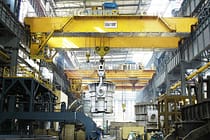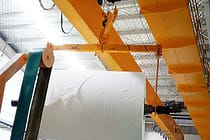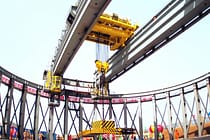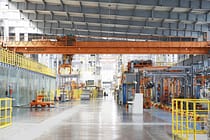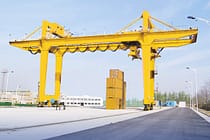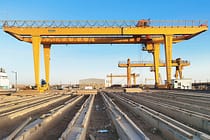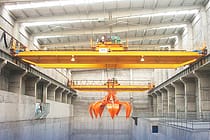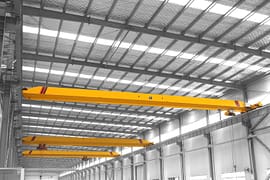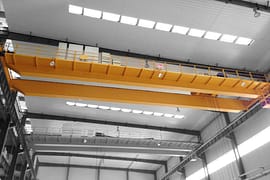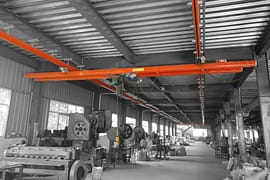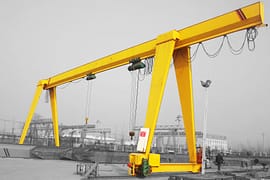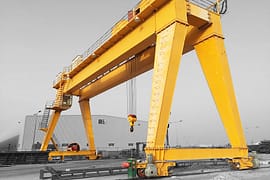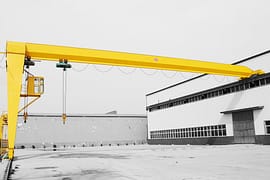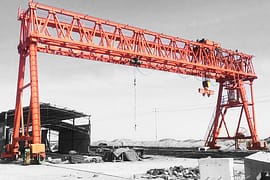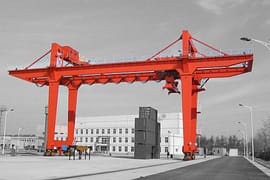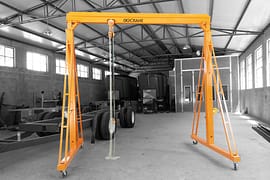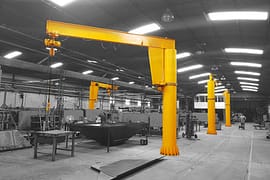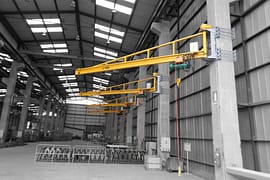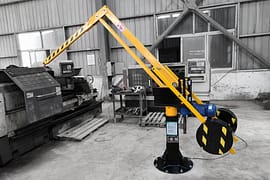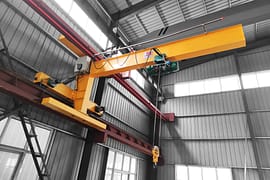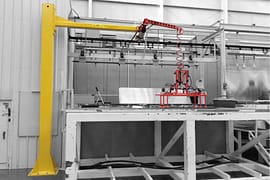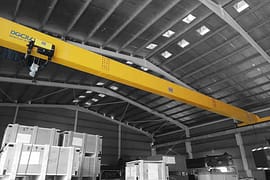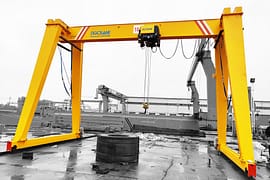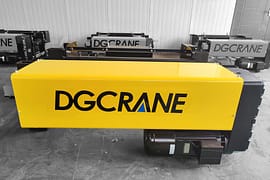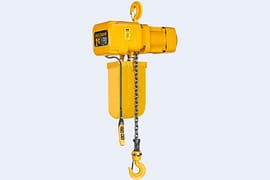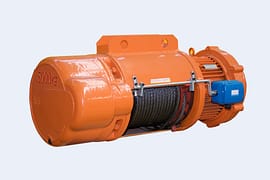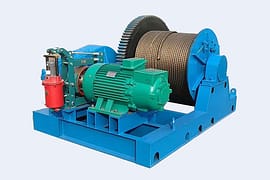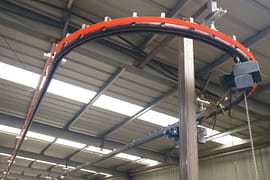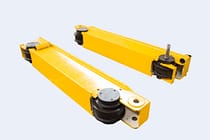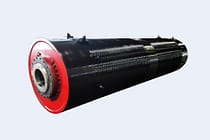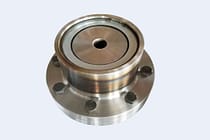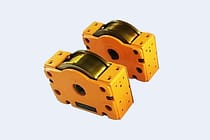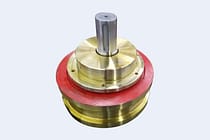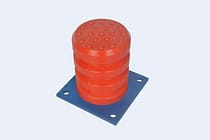Overhead Cranes Used In Granite
Much of what makes granite so unique is the history behind the stone. At G&L Marble showrooms, where granite slabs are neatly stacked in bundles for viewing, it is easy to overlook the long process of getting granite into your kitchen. So how does a rock become a countertop?
First, the granite must be discovered. Natural stone quarries are located throughout the world. Every continent has its own distinctive rock types and colors. Through a process of prospecting and studying geological surveys, sites are chosen for their structure, color and marketability. These sites may be located in extremely remote locations such as Madagascar, The Amazon region of Brazil, or in the desert region of Namibia, located on the continent of Africa. Once a site is chosen, and mining licenses are obtained by following strict environmental guidelines, quarrying begins.
Next the granite must be extracted from the earth. Extraction is a process of drilling and wire sawing to release huge benches of stone. The benches are then drilled and split into blocks. The finished blocks on average are 10'x6'x6' and can weigh as much as 40 tons. Blocks are inspected for any cracks, major flaws and for color range.
Transportation from the quarry to the processing plant is varied depending on the location of the quarry. From our desert quarries in Namibia, many of the blocks trucked 1200 miles to our plant in South Africa. Other blocks are sent by truck to the port of Walvis Bay, Namibia and then transported by ship to Italy for processing. Upon arrival at the processing plant, blocks are selected for cutting. Using 40 ton Gantry Cranes, the blocks are positioned on large trolley carts and pulled under the gang saws for cutting. The gang saws are enormous machines. The massive blades are aligned and spaced on a large carriage up to 18' wide. Driven by electric motors the carriage is pushed and pulled back and forth. While the blades are moving, a cutting slurry comprised of steel grit and water is poured over the blocks to provide the abrasion for the cutting.
Completion of the block cutting requires between 2-7 days (depending on the hardness of the stone). The quality of the cutting is dependent on the skills of the gang saw masters who are in charge of the cutting. Because of the variables in stone hardness, density, the slurry, blade tensioning, and cutting speed, the sawing process requires constant monitoring by the masters. The rough cut slabs are then thoroughly cleaned with water and prepared for the next phase of processing.
The next phase is determined by the specific type of stone. Many of the granites quarried today go through an epoxy process to enhance the quality of the stone. For example, the large quartz crystals found in some granite have fissures or crazing to them. The fact is, if there weren't fissures it would not be quartz. These characteristics are inherent to that mineral. These fissures are not defects, as we say in the stone industry, "Mother Nature doesn't make mistakes". However, with today's epoxy technology, a greater variety of exotic granites can be processed for countertops.
The epoxy process begins by loading the slabs into an oven to completely dry the stone and bring it to an even temperature before the epoxy is applied. Epoxy resin is poured and then troweled on in a thin layer over the entire surface of the slab. Slabs are then rolled into a vacuum chamber drawing out any air pockets so the epoxy can penetrate deeply into the slabs. The epoxy is then oven cured into extremely hard coating.
The polishing process is the same regardless of whether a slab has been epoxied. The polishing line is a long conveyor-fed machine which sends the slabs under 21 separate grinding, then polishing heads. The polish is achieved by a series of grits on rotating polishing heads starting from a very coarse 60 grit diamond abrasive to 1800 grit polishing bricks. When the epoxied slabs are polished, all the epoxy is ground from the surface. What remains is the epoxy that has penetrated below the surface into any fissures, pits or voids. After quality inspection the slabs are ready to be bundled, loaded into a container and shipped. Once the slabs have been packed into bundles (think slices of bread in a loaf), they are loaded into shipping containers. These containers are then loaded onto a cargo ship bound for different destinations. Our containers (shipped from all over the world) are brought into the port of Savannah or Charleston. Shipping times vary depending on the port of discharge, however, 4-6 weeks is typical travel time from any factory to our warehouse.
Upon arrival at the port of entry, customs clearing along with the random USDA inspections take place. Once cleared from the port, the containers are then loaded onto a truck bound for our Winston, GA warehouse.
At the warehouse, the containers are unloaded by overhead cranes, then staged for quality control. During quality control each individual slab is inspected for any processing defects, cracks, quality of polish etc. From our main warehouse bundles are shipped to our showroom locations in Alpharetta, Atlanta, Birmingham, Destin, High Point, Jacksonville, Knoxville and Raleigh. The handling of the slabs (weighing in excess of 1200 lbs) is done by use of overhead cranes or mechanical loading booms. At our showrooms the slabs are on full display for customers to make their selections. Our showrooms are equipped to layout a bundle of a chosen material so the customer can actually pick their individual slabs. Upon selecting and approving specific slabs, the customer then contracts with a fabricator to cut and install their countertops. Fabricators place the customer's slab order with G&L and we ship to their shop within 2-3 days from placing the order.
When looking at a granite countertop, it is hard to imagine the extensive and time consuming process it has undergone before arriving in your home. Thousands of miles have been traveled and hundreds of hands have extracted, polished, trucked, shipped, received, measured, cut and installed that piece of stone. Natural stone has a history in regards to its formation, but simply getting from the earth to your home is a story in itself. It is this story that explains why people who enjoy their granite countertops appreciate natural stone. Every piece is as unique as the homeowners themselves. This appreciation of natural stone separates granite from "just another building material". Yet despite the many processes that are involved, natural stone remains very competitively priced. In many cases it is priced lower than solid surface products, even though solid surface is produced at a fraction of the cost. Natural stone is in a class by itself. The only truly natural choice is natural stone.

